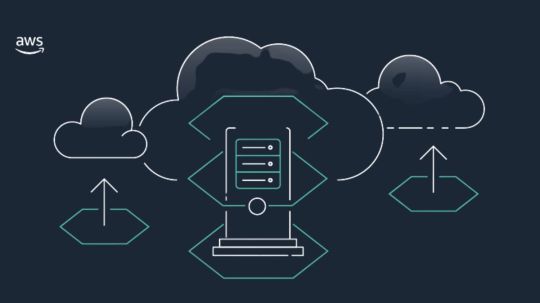#DataLakes
Explore tagged Tumblr posts
Text
Optimize your data strategy by designing a data lake framework in AWS. Our guide provides expert advice on creating a scalable, efficient solution
#dataframewok#dataframeworkAWS#AWS#AWSwithdatalake#datalake#datalakeframework#datalakeframeworkewithAWS#datalakes#datalakeframeworkinusa#datalakedesign#datatransformation
0 notes
Text

#PollTime
Which database trend are you most interested in exploring?
A) Data Lakes📈
B) AI-Driven Insights🚀
C) Distributed Databases🕸️
D) Database as a Service (DBaaS)⚙️
Comment your answers below 👇
💻 Explore insights on the latest in #technology on our Blog Page 👉 https://simplelogic-it.com/blogs/
🚀 Ready for your next career move? Check out our #careers page for exciting opportunities 👉 https://simplelogic-it.com/careers/
#simplelogic#makingitsimple#itcompany#dropcomment#manageditservices#itmanagedservices#poll#polls#itservices#itserviceprovider#itservicescompany#itservicemanagement#database#datalakes#aidriven#dbaas#managedservices#testyourknowledge#makeitsimple#simplelogicit
0 notes
Text
A Closer Look at the Benefits of a Data Lake: Why is it important to architect and integrate the right-fit data lake platform?

Data lakes are central repositories that store large volumes of structured, unstructured, and semi-structured data. They are ideal for machine learning use cases and support SQL-based access and programmatic distributed data processing frameworks. Data lakes can store data in the same format as its source systems or transform it before storing it. They support native streaming and are best suited for storing raw data without an intended use case. Data quality and governance practices are crucial to avoid a data swamp. Data lakes enable end-users to leverage insights for improved business performance and enable advanced analytics.
Why are data lakes important?
A data lake is a powerful tool for businesses to rapidly ingest and analyze new data, enabling faster response to new information and access to previously unavailable data types. This data lake is a popular source for machine learning, enabling discovery-oriented exploration, advanced analytics, and reporting. It consolidates big data and traditional data, enabling analytical correlations across all data. A data lake can store intermediate or fully transformed data, reducing data preparation time and ensuring compliance with data security and privacy policies. Access controls also used to maintain security. A data lake provides many data sources for businesses to explore, analyze, and report on.
The Benefits of a Data Lake for Your Business
A data lake is a powerful tool that allows organizations to store all data in one place at a low cost, enabling them to make informed decisions based on data. This data democratization allows middle management and other departments to access and make decisions based on the needed data, reducing the time spent on decision-making.
Data lakes also provide better quality data, as they offer tremendous processing power and can store multi-structured data from diverse sources. They offer scalability, which is relatively inexpensive compared to traditional data warehouses. They can store logs, XML, multimedia, sensor data, binary, social data, chat, and people data.
Schema flexibility is another advantage of data lakes. Hadoop data lakes allow for schema-free or multiple schemas for the same data, enabling better analytics. They also support various languages, such as Hive/Impala/Hawq, which supports SQL but also offers features for more advanced use cases.
In summary, a data lake offers numerous benefits for organizations, including better quality data, democratization, scalability, versatility, and support for various languages. By leveraging the power of data lakes, organizations make well-informed decisions and enhance their overall business operations.
Exploring the Challenges of a Data Lake
Data lakes are emerging technologies that require significant investment and can be challenging to implement. They face challenges such as identifying a use case, organizational hurdles, and technological challenges. Data lakes are often associated with Hadoop, a parallel programming paradigm that HortonWorks uses, which is unsuitable for small datasets. Hadoop is suitable for large but not small datasets, as it stores everything in 260 megabytes. It only supports inserts and updates, making decoupling data and metadata difficult for users. Open-source technology can create
bugs in the system, and there are too many moving parts for Hadoop developers to manage. Choosing the right technology stack for a data lake requires integrating various ingestion, processing, and exploration technologies. No standard rules for security, governance, operations, and collaboration make things more complicated.
Additionally, data lakes have hard SLAs for query processing time and data ingestion ETL pipelines. The solution must be scalable from one user to many users and from one kilobyte of data to a few petabytes. As the big data industry changes rapidly, businesses need to select robust enough technology to comply with SLAs. Factors that need to consider while choosing a technology stack include On-Premise, on the Cloud, and Managed Services.
Security and compliance data management have become increasingly complex, and robust security measures are crucial to protect company data and customer information. GDPR and CCPA are data privacy laws essential for data lakes, requiring proof of data erasure and removal. The security strategy depends on cloud-based, on-premise, or hybrid architecture, with cloud-based data lakes particularly vulnerable. Robust encryption protocols and controls are necessary to ensure data protection and reputation.
Data governance
Data governance is crucial for maintaining quality, security, and compliance throughout the organization's lifecycle. Data lake investments may cause conflicting results and data trustworthiness without a framework. A data governance framework ensures consistent rules, standards, and definitions for data analysis.
Data quality
Managing data quality in a lake is challenging due to the potential for poor data to slip in undetected. Validating lake data is crucial to prevent issues and ensure business activities. Creating data zones based on quality checks can help, such as transferring freshly ingested data to transient zones, where it can have labeled as trusted.
Costs
Cloud infrastructure costs are a significant concern for business leaders, with 73% reporting C-suite spending and 49% stating higher spending than expected. Factors like supply chain disruptions, energy prices, and lack of competition contribute to these costs. A strong FinOps framework can help control costs while building and managing data lakes.
Performance
Large data lakes can cause performance issues, such as bottlenecks due to numerous small files and deleted files causing issues. Limitations on processing information units and storage time can cause bottlenecks, affecting analysis and overall performance.
Ingestion
Data lakes store unprocessed data for later analysis, but improper ingestion can lead to a data swamp. To optimize data ingestion, create a plan, understand the data's purpose, compress data, and limit small files to improve performance.
Exploring the Benefits of Data Lakes for Companies
Companies increasingly collect more data, necessitating a scalable database for data storage. Data lakes have emerged as a cost-effective solution for big data storage, offering significant cost savings and preventing silos. They provide a central repository for data, making it accessible across the organization. Data lakes also support advanced analytics, enabling businesses to forecast future trends and prepare accordingly. Data lakes are schema-free, allowing for flexibility in data storage in any format. This allows for efficient ETL pipelines without prematurely stripping away vital information. Companies that effectively implement a data lake experience improved business performance, with 24% of data lake leaders reporting strong or highly effective organic revenue growth and 15% experiencing growth in operating profit compared to 11% of followers. Simplifying data collection is another benefit of data lakes. They can ingest data of any format without structure, allowing easy collection and processing for specific use cases. This flexibility allows companies to access more data for advanced analytics and improves overall business performance.
The Impact of Data Lakes on Today's Business
Rapid ingestion and native format storage are key benefits of data lakes. Raw data refers to data without processing or preparation, with some sources having previously processed data. Data lakes store raw data without processing or preparing it, except for formatting. The native format ensures data remains in the source system's format, but this is not always the best option for data lake storage. Rapid ingestion rarely involves copying data as-is into a file system directory.
Types of data lake solutions
Cloud: Organizations typically store data lakes in the cloud, using third-party infrastructure for monthly fees like Google Cloud.
Multi-cloud: Multi-cloud data lakes combine Amazon Web Services and Google Cloud solutions.
On-premise: The Company establishes an on-premise data lake using in-house resources, requiring higher upfront investment than the cloud.
Hybrid: The Company utilizes a hybrid setup, transitioning data from on-premise to cloud, temporarily utilizing both infrastructures.
What to look for in a data lake solution?
When evaluating data lake solutions, keep the following criteria in mind.
Integration with your existing data architecture:
Strong cybersecurity standards.
Costs.
Uncovering the Mysteries of Data Lakes: What You Need to Know
A data lake is a large storage repository that can quickly ingest huge amounts of raw data in its native format, enabling business users to access it and data scientists to apply analytics for insights. It is ideal for unstructured big data like tweets, images, voice, and streaming data but can store any type of data, regardless of source, size, speed, or structure.
Conclusion:
Sun Technologies operates on a variety of data, high in volume, with incredible velocity to build prototypes and explore data. We reduced the effort to ingest data, delayed work to plan the schema and create models until the value of the data is known, and also we help you store large volumes of data cost-effectively.
https://suntechnologies.com/contact-us/
0 notes
Text
1st Roadmap for Converting Big Data Actionable Intelligence

These days, information is more valuable than oil. The engine keeps companies running, influences policy, and generates new ideas. However, conventional data processing methods become inadequate when this data grows so large and complicated. Big Data is the phrase used to describe the enormous amounts of structured and unstructured data generated and received by organizations every day. However, it is more than the quantity of information that is crucial. What matters is what companies do with the information they collect. Better business choices and strategies may be made with the help of analysis of Big Data.
Just What Does "Big Data" Entail?

Big Data Big Data is a term used to describe massive datasets that exceed the capabilities of conventional database management systems and data analysis software. It's about how much data there is and how fast it changes. Big Data may be collected from many different places and forms, from databases to social media postings to photographs and videos. Creating and analyzing this data quickly enough to suit real-time needs is also essential. The three Vs. (volume, variety, and velocity) are often used with the word.
Implementations of Big Data in the Real World
Big Data is everywhere. Facebook and Twitter, for example, process billions of daily posts, likes, and shares. Companies like Amazon and Alibaba, specializing in online retail, conduct millions of online transactions daily, creating a mountain of user data. Big data analytics are also utilized in the healthcare industry to examine patient information, treatment plans, and research data for trends and insights. Some current applications of Big Data include the ones listed above. Though, Big Data is having an impact across all industries.
Big Data's Journey from Fad to Functional Business Tool
Big Data was once only a phrase, but it has become necessary for modern businesses over the last decade. Companies of all sizes and sectors are investing in Big Data technology and tools because of the value they see in the information they collect, store, and analyze. Therefore, company strategy, operational efficiency, and consumer experiences now rely heavily on Big Data. In today's information-driven economy, it's no longer a luxury but a need for companies to maintain a competitive edge.
Recognizing the Foundations of Big Data
Big Data Can Be Divided Into Three Major Categories: Structured, Unstructured, and Semi-structured Structured, unstructured, and semi-structured data are the three primary forms of Big Data. Structured data may be accessed and analyzed quickly and easily. Data in databases, spreadsheets, and customer relationship management systems are all included. On the other hand, unstructured data is challenging to examine and needs to be organized. Information such as emails, social media postings, and video clips are all part of it. Data like XML and JSON files are examples of semi-structured data. Most businesses deal with all three kinds of data, each with advantages and disadvantages.
Volume, Velocity, Variety, Veracity, Value, and Visualization are the seven "V's" of big data.
The 7 V's of Big Data serve as a guide for making sense of the many moving parts involved in Big Data. Volume describes how much data there is, velocity describes how quickly new data is being generated, variety describes the different types of data, integrity describes how reliable the data is, value describes how valid the data is, variability describes how inconsistent the data is, and visualization describes how the data is presented clearly and understandably. To successfully manage and use Big Data, it is essential to have a firm grasp on these facets and the problems and benefits they provide.
Technologies and Methodologies for Big Data
Hadoop and Spark's Importance for Big Data Processing Common Big Data processing frameworks include Hadoop and Spark. Hadoop is a popular open-source software framework due to its capacity for storing and processing massive amounts of data in a parallel fashion over a network of computers. It processes Big Data in parallel by dividing it into smaller, more manageable parts. With this method, we can process more data per unit of time and simultaneously manage endless activities and jobs. On the other hand, Spark is well-known for its rapid processing of massive datasets and user-friendliness. Because of its in-memory computing capabilities, this open-source distributed computing system processes Big Data significantly more quickly than Hadoop. Spark is widely used for Big Data analytics because of its efficiency in processing real-time data and compatibility with machine learning methods.
NoSQL Databases and Big Data Management
When dealing with Big Data, NoSQL databases are essential. NoSQL databases are more versatile, scalable, and high-performing than relational databases because they can deal with unstructured data. They were developed to fill the gap left by relational databases while dealing with Big Data. NoSQL databases are well-suited to the heterogeneous nature of Big Data because they can store, process, and analyze information that doesn't conform to a traditional tabular model. Real-Time Analytics' Explosive Growth and Its Effect on Big Data The usage of Big Data in enterprises is being revolutionized by real-time analytics. It enables organizations to analyze data as it is being created, letting them adapt quickly to new circumstances. This is especially helpful when instantaneous reactions, such as banking fraud detection, e-commerce product suggestion, or navigation app traffic monitoring, are required.
Data Mining and Artificial Intelligence
The Role of Big Data in the Development of AI and ML Artificial intelligence (AI) and machine learning (ML) run on Big Data. These tools need massive volumes of data to learn, make predictions, and grow. Machine learning algorithms, for instance, may sift through mountains of data in search of patterns and predictions. At the same time, artificial intelligence (AI) programs can hone their problem-solving and decision-making skills with the help of Big Data. For AI and ML to learn and adapt effectively, large amounts of data are required.

Insights Into The Future, Using Big Data And Predictive Analytics Insights into the Future, using Big Data and Predictive Analytics One of Big Data's most valuable functions is in predictive analytics. It analyzes past events with the use of machine learning and statistical algorithms. Predictive analytics is used by businesses to foresee future consumer actions, market developments, and financial results. Companies can anticipate future events and trends to make strategic choices and implement them.
The Role of Big Data in Organizations
How Big Data Is Giving Businesses a Leg Up Companies use Big Data to give themselves an edge in the market. Big data analytics help them learn more about their clients, internal processes, and market tendencies. They may use this information to make educated business choices, boost their offerings, and provide better customer service. Big data allows companies to discover fresh prospects, increase productivity, and fuel creativity. The Value of Big Data for Marketers Seeking Deeper Insight into Their Target Audiences and Industry In marketing, Big Data is utilized to analyze consumer trends, likes, and dislikes. Marketers use consumer data analysis to tailor their strategies, boost loyalty, and encourage repeat business. Marketers may increase consumer satisfaction and loyalty by tailoring their communications to each individual's interests and habits. Finance and Big Data: New Methods for Managing Risk and Investing Big data is utilized for risk management and investing strategies in the financial sector. Financial organizations must evaluate massive amounts of financial data to mitigate losses, maximize returns, and meet regulatory standards. Big data is used by financial institutions for real-time fraud detection and by investment companies for trend analysis and investment decision-making, to name just two examples.
Big Data's Impact on Several Sectors
Big Data's Impact on Healthcare Big data analytics is being utilized to enhance healthcare delivery and results. To make accurate diagnoses, provide effective treatments, and anticipate future health hazards, healthcare experts examine patient data. By collecting and analyzing patient records, clinicians may assess the risk of a patient contracting a disease and provide preventative care accordingly. Similarly, healthcare practitioners may learn which medications work best for certain illnesses by evaluating data on those treatments. The Effects of Big Data on Consumer Goods and Industrial Production Big data enhances processes and increases productivity in the retail and industrial sectors. Both retailers and manufacturers may benefit from analyzing sales data since doing so helps with inventory management, customer service, and lowering manufacturing costs. By monitoring sales data, for instance, stores may foresee which goods would be in high demand and refill appropriately. Similarly, producers may address production inefficiencies by evaluating production data.

Insights Into The Future, Using Big Data And Predictive Analytics The Impact of Big Data on the Future of Education and Training Big data is being utilized to improve education and student outcomes. Teachers use data analysis to tailor lessons to each student's needs, boost academic achievement, and boost learning outcomes. Teachers may help children who need it by assessing student performance data to determine which ones are having difficulties. Similarly, instructors might create individualized lesson plans for their students by examining their learning data.
Big Data: Its Perils and Potentials
Data Privacy and Compliance in the Age of Big Data Big Data has many potential advantages but drawbacks, notably in data protection and regulatory compliance. The data a company collects, stores, and uses must be done legally and ethically. This includes using stringent data security measures, securing the required consent for data gathering, and guaranteeing the openness of data practices. From Data-Driven Decision-Making to Innovation, Capitalizing on Big Data's Promise Despite the difficulties, Big Data presents tremendous opportunities. Companies that know how to use Big Data will benefit from new insights, data-driven choices, and increased creativity. Big data allows companies to discover fresh prospects, boost productivity, and fuel creativity.
Strategies and Methods for Optimizing Big Data
Governance and Data Quality for Big Data Projects. The success of Big Data projects depends heavily on the quality and management of their data. Businesses must guarantee their data's integrity, confidentiality, and safety. Effective data management also requires establishing data governance rules and procedures. Training employees on data management best practices and building data governance frameworks are all part of this process. Leadership, Ethics, and Education for a Data-Driven Organization To fully make use of Big Data, it is necessary to foster a data-driven culture. Creating a data-literate community requires establishing a norm of respect for data integrity and encouraging good data hygiene practices. Leaders play a critical role in developing a data-driven culture by setting an example, modeling the use of data, and encouraging others to do the same.
Big Data's Bright Future
The Internet of Things, Cloud Computing, and Other Future Big Data Technologies Big data's promising future. New technologies, such as the Internet of Things (IoT) and cloud computing, produce unprecedented amounts of data, presenting exceptional data analysis and insight opportunities. From intelligent household appliances to factory-floor sensors, IoT gadgets provide a deluge of data that may be mined for helpful information. Similarly, cloud computing reduces the complexity and expense of storing and processing Big Data.
Big Data's Return on Investment: Examples and Success Stories
Big data has the potential to provide a substantial return on investment (ROI). Numerous case studies and success stories show how Big Data has helped firms increase operations, provide better customer service, and fuel expansion. Businesses like Amazon and Netflix have turned to Big Data and personalized suggestions to serve their customers better. The healthcare industry has also utilized big data to improve patient care and results, increasing patient happiness and decreasing healthcare expenditures.
Summary: Using Big Data to Create a Better Tomorrow
To sum up, Big Data is changing how we work and live. It facilitates enhanced decision-making, operations, and consumer experiences for enterprises. It's assisting the healthcare industry, the education sector, and government agencies in better serving their constituents. Big Data's significance and usefulness will increase as we produce and amass more information.
Conclusion: Your Adventure Through the Big Data Horizon
Big data will become more crucial in the future. Understanding Big Data and its possibilities may help you navigate the future, whether you're a corporate leader, a data specialist, or a curious person. Get started in the Big Data world and learn how to use data to shape a better future. Read the full article
#ArtificialIntelligence#BigData#BusinessIntelligence#DataAnalysis#DataGovernance#DataInfrastructure#DataIntegration#DataLakes#DataManagement#DataQuality#DataScience#DataSecurity#DataWarehousing#Hadoop#MachineLearning#NoSQL#PredictiveAnalytics#Spark
0 notes
Text

#dataengineer#onlinetraining#freedemo#cloudlearning#azuredatlake#Databricks#azuresynapse#AzureDataFactory#Azure#SQL#MySQL#NewTechnolgies#software#softwaredevelopment#visualpathedu#onlinecoaching#ADE#DataLake#datalakehouse#AzureDataEngineering
2 notes
·
View notes
Text
ARRRRGH I DONT NEED AN EXCUSE TO POST ART ARRRRRRGH IM GONNA DO IT

he :)
5 notes
·
View notes
Text

Join our latest AWS Data Engineering demo and take your career to the next level!
Attend Online #FREEDEMO from Visualpath on # AWSDataEngineering by Mr.Chandra (Best Industry Expert).
Join Link: https://meet.goto.com/248120661
Free Demo on: 01/02/2025 @9:00AM IST
Contact us: +91 9989971070
Trainer Name: Mr Chandra
WhatsApp: https://www.whatsapp.com/catalog/919989971070/
Visit Blog: https://awsdataengineering1.blogspot.com/
Visit: https://www.visualpath.in/online-aws-data-engineering-course.html
#azuredataengineer#Visualpath#elearning#TechEducation#online#training#students#softwaredevelopment#trainingcourse#handsonlearning#DataFactory#DataBricks#DataLake#software#dataengineering#SynapseAnalytics#ApacheSpark#synapse#NewTechnology#TechSkills#ITSkills#ade#Azure#careergrowth
0 notes
Text
youtube
Mode of Training: Online
Contact 📲 +91-9989971070
🔵Please join the WhatsApp group for an update
To subscribe to the Visualpath channel & get regular
updates on further courses: https://www.youtube.com/@VisualPath_Pro
Watch the Demo video@ https://youtu.be/05JwGocc0Vw?si=bRHs0mFwU6xnI1UG
#azuredataengineer#Visualpath#elearning#TechEducation#online#training#students#softwaredevelopment#trainingcourse#handsonlearning#DataFactory#DataBricks#DataLake#software#dataengineering#SynapseAnalytics#ApacheSpark#synapse#NewTechnology#TechSkills#ITSkills#ade#Azure#careergrowth#Youtube
0 notes
Text
Why Do So Many Big Data Projects Fail?

In our business analytics project work, we have often come in after several big data project failures of one kind or another. There are many reasons for this. They generally are not because of unproven technologies that were used because we have found that many new projects involving well-developed technologies fail. Why is this? Most surveys are quick to blame the scope, changing business requirements, lack of adequate skills etc. Based on our experience to date, we find that there are key attributes leading to successful big data initiatives that need to be carefully considered before you start a project. The understanding of these key attributes, below, will hopefully help you to avoid the most common pitfalls of big data projects.
Key attributes of successful Big Data projects
Develop a common understanding of what big data means for you
There is often a misconception of just what big data is about. Big data refers not just to the data but also the methodologies and technologies used to store and analyze the data. It is not simply “a lot of data”. It’s also not the size that counts but what you do with it. Understanding the definition and total scope of big data for your company is key to avoiding some of the most common errors that could occur.
Choose good use cases
Avoid choosing bad use cases by selecting specific and well defined use cases that solve real business problems and that your team already understand well. For example, a good use case could be that you want to improve the segmentation and targeting of specific marketing offers.
Prioritize what data and analytics you include in your analysis
Make sure that the data you’re collecting is the right data. Launching into a big data initiative with the idea that “We’ll just collect all the data that we can, and work out what to do with it later” often leads to disaster. Start with the data you already understand and flow that source of data into your data lake instead of flowing every possible source of data to the data lake.
Then next layer in one or two additional sources to enrich your analysis of web clickstream data or call centre text. Your cross-functional team can meet quarterly to prioritize and select the right use cases for implementation. Realize that it takes a lot of effort to import, clean and organize each data source.
Include non-data science subject matter experts (SMEs) in your team
Non-data science SMEs are the ones who understand their fields inside and out. They provide a context that allows you to understand what the data is saying. These SMEs are what frequently holds big data projects together. By offering on-the-job data science training to analysts in your organization interested in working in big data science, you will be able to far more efficiently fill project roles internally over hiring externally.
Ensure buy-in at all levels and good communication throughout the project
Big data projects need buy-in at every level, including senior leadership, middle management, nuts and bolts techies who will be carrying out the analytics and the workers themselves whose tasks will be affected by the results of the big data project. Everyone needs to understand what the big data project is doing and why? Not everyone needs to understand the ins and outs of the technical algorithms which may be running across the distributed, unstructured data that is analyzed in real time. But there should always be a logical, common-sense reason for what you are asking each member of the project team to do in the project. Good communication makes this happen.
Trust
All team members, data scientists and SMEs alike, must be able to trust each other. This is all about psychological safety and feeling empowered to contribute.
Summary
Big data initiatives executed well delivers significant and quantifiable business value to companies that take the extra time to plan, implement and roll out. Big data changes the strategy for data-driven businesses by overcoming barriers to analyzing large amounts of data, different types of unstructured and semi-structured data, and data that requires quick turnaround on results.
Being aware of the attributes of success above for big data projects would be a good start to making sure your big data project, whether it is your first or next one, delivers real business value and performance improvements to your organization.
#BigData#BigDataProjects#DataAnalytics#BusinessAnalytics#DataScience#DataDriven#ProjectSuccess#DataStrategy#DataLake#UseCases#BusinessValue#DataExperts
0 notes
Text
Best Data Analytics Company | Saudi | Flycatch
Transform your business with data-driven insights. Our Data Analytics Company in saudi delivers customized solutions to optimize performance, enhance decision-making, and drive growth using advanced analytics tools and strategies.
#best data analytics company#data migration services#bigdata solutions company in saudi arabia#datalake solutions in saudi arabia
0 notes
Text
Data Lake VS Data Warehouse - Understanding the difference
Data Warehouse & Data Lake

Before we jump into discussing Data Warehouse & Data Lakes let us understand a little about Data. The term Data is all about information or we could say data & information are words that are used interchangeably, but there is still a difference between both of them. So what exactly does it mean ??
Data are "small chunks" of information that do not have value until and unless it is structured, but information is a set of Data that is addressing a value from the words itself.
Now that we understand the concept of Data, let's look forward to learning about Data Warehouse & Data Lake. From the name itself we could get the idea that there is data that is maintained like how people keep things in a warehouse, and how the rivers join together to meet and build a lake.
So to understand technically Data Warehouses & Data Lakes both of the terms are used to introduce the process of storing Data.
Data Warehouse
A Data Warehouse is a storage place where different sets of databases are stored. Before the process of transferring data into a warehouse from any source or medium it is processed and cleaned and containerized into a database. It basically has summarized data which is later used for reporting and analytical purposes.
For an example, let us consider an e-commerce platform. They maintain a structured database containing customer details, product details, purchase history. This data is then cleaned, aggregated and organized in a data warehouse using ETL or ELT process.
Later this Data Warehouse is used to generate reports by analysts to make an informed data driven decision for a business.
Data Lake
A data lake is like a huge storage pool where you can dump all kinds of data—structured (like tables in a database), semi-structured (like JSON files), and unstructured (like images, videos, and text documents)—in their raw form, without worrying about organizing it first.
Imagine a Data Lake as a big, natural lake where you can pour in water from different sources— rivers, rain, streams, etc. Just like the water in a lake comes from different places and mixes together, a data lake stores all kinds of data from various sources.
Store Everything as It Is. In a data lake, you don’t need to clean, organize, or structure the data before storing it. You can just dump it in as it comes. This is useful because you might not know right away how you want to use the data, so you keep it all and figure that out later.
Since the data is stored in its raw form, you can later decide how to process or analyze it. Data scientists and analysts can use the data in whatever way they need, depending on the problem they’re trying to solve.
What is the connection between Data-warehouse and Data-lakes?
Data Lake: Think of it as the first stop for all your raw data. A data lake stores everything as it comes in—whether it’s structured, semi-structured, or unstructured—without much processing. It’s like a big, unfiltered collection of data from various sources.
Data Warehouse: After the data is in the lake, some of it is cleaned, organized, and transformed to make it more useful for analysis. This processed and structured data is then moved to a data warehouse, where it’s ready for specific business reports and queries
Together, they form a data ecosystem where the lake feeds into the warehouse, ensuring that raw data is preserved while also providing clean, actionable insights for the business.
1 note
·
View note
Text

Microsoft Fabric Training In Hyderabad | Microsoft Fabric Course
#Visualpath provides a top-rated online #MicrosoftFabric Course, acknowledged globally. Advance your career in data analytics, cloud computing, and business intelligence by participating in our Microsoft Fabric Training and staying competitive in the job market. This program will equip you with insights into various components of Microsoft Fabric, including Power BI, Azure Synapse Analytics, and Azure Data Factory. To schedule a free demo, please reach out to us at +91-9989971070. Visit Blog: https://visualpathblogs.com/ WhatsApp: https://www.whatsapp.com/catalog/919989971070 Visit: https://www.visualpath.in/online-microsoft-fabric-training.html
#Microsoft#fabric#Azure#microsoftazure#AzureAI#cloud#PowerBI#DataFactory#synapse#dataengineering#DataAnalytics#DataWarehouse#businessintelligence#datascience#corporatetraining#Visualpathpro#PowerPlatform#azurecloud#AzureSQL#DataLake
1 note
·
View note
Text
AWS Supply Chain Features For Modernizing Your Operations

AWS Supply Chain Features
Description of the service
AWS Supply Chain integrates data and offers demand planning, integrated contextual collaboration, and actionable insights driven by machine learning.
Important aspects of the product
Data lakes
For supply chains to comprehend, retrieve, and convert heterogeneous, incompatible data into a single data model, AWS Supply Chain creates a data lake utilizing machine learning models. Data from a variety of sources, including supply chain management and ERP systems like SAP S/4HANA, can be ingested by the data lake.
AWS Supply Chain associates data from source systems to the unified data model using machine learning (ML) and natural language processing (NLP) in order to incorporate data from changeable sources like EDI 856. Predefined yet adaptable transformation procedures are used to directly transform EDI 850 and 860 messages. Amazon S3 buckets may also store data from other systems, which generative AI will map and absorb the AWS Supply Chain Data Lake.
Insights
Using the extensive supply chain data in the data lake, AWS Supply Chain automatically produces insights into possible supply chain hazards (such overstock or stock-outs) and displays them on an inventory visualization map. The inventory visualization map shows the quantity and selection of inventory that is currently available, together with the condition of each location’s inventory (e.g., inventory that is at risk of stock out).
Additionally, AWS Supply Chain provides work order analytics to show maintenance-related materials from sourcing to delivery, as well as order status, delivery risk identification, and delivery risk mitigation measures.
In order to produce more precise vendor lead-time forecasts, AWS Supply Chain uses machine learning models that are based on technology that is comparable to that used by Amazon. Supply planners can lower the risk of stock-outs or excess inventory by using these anticipated vendor lead times to adjust static assumptions included in planning models.
By choosing the location, risk type (such as stock-out or excess stock risk), and stock threshold, inventory managers, demand planners, and supply chain leaders can also make their own insight watchlists. They can then add team members as watchers. AWS Supply Chain will provide an alert outlining the possible risk and the affected locations if a risk is identified. Work order information can be used by supply chain leaders in maintenance, procurement, and logistics to lower equipment downtime, material inventory buffers, and material expedites.
Suggested activities and cooperation
When a risk is identified, AWS Supply Chain automatically assesses, ranks, and distributes several rebalancing options to give inventory managers and planners suggested courses of action. The sustainability impact, the distance between facilities, and the proportion of risk mitigated are used to rate the recommendation options. Additionally, supply chain managers can delve deeper to examine how each choice would affect other distribution hubs around the network. Additionally, AWS Supply Chain continuously learns from your choices to generate better suggestions over time.
AWS Supply Chain has built-in contextual collaboration features to assist you in reaching an agreement with your coworkers and carrying out rebalancing activities. Information regarding the risk and suggested solutions are exchanged when teams message and chat with one another. This speeds up problem-solving by lowering mistakes and delays brought on by inadequate communication.
Demand planning
In order to help prevent waste and excessive inventory expenditures, AWS Supply Chain Demand Planning produces more accurate demand projections, adapts to market situations, and enables demand planners to work across teams. AWS Supply Chain employs machine learning (ML) to evaluate real-time data (such open orders) and historical sales data, generate forecasts, and continuously modify models to increase accuracy in order to assist eliminate the manual labor and guesswork associated with demand planning. Additionally, AWS Supply Chain Demand Planning continuously learns from user inputs and shifting demand patterns to provide prediction updates in almost real-time, enabling businesses to make proactive adjustments to supply chain operations.
Supply planning
AWS Supply Chain Supply Planning anticipates and schedules the acquisition of components, raw materials, and final products. This capability takes into account economic aspects like holding and liquidation costs and builds on nearly 30 years of Amazon experience in creating and refining AI/ML supply planning models. Demand projections produced by AWS Supply Chain Demand Planning (or any other demand planning system) are among the extensive, standardized data from the AWS Supply Chain Data Lake that are used by AWS Supply Chain Supply Planning.
Your company can better adapt to changes in demand and supply interruptions, which lowers inventory costs and improves service levels. By dynamically calculating inventory targets and taking into account demand variability, actual vendor lead times, and ordering frequency, manufacturing customers can improve in-stock and order fill rates and create supply strategies for components and completed goods at several bill of materials levels.
N-Tier Visibility
AWS Supply Chain N-Tier Visibility extends visibility beyond your company to your external trading partners by integrating with Work Order Insights or Supply Planning. By enabling you to coordinate and confirm orders with suppliers, this visibility enhances the precision of planning and execution procedures. In a few simple actions, invite, onboard, and work together with your trading partners to get order commitments and finalize supply arrangements. Partners provide commitments and confirmations, which are entered into the supply chain data lake. Subsequently, this data can be utilized to detect shortages of materials or components, alter supply plans with fresh data, and offer more insightful information.
Sustainability
Sustainability experts may access the necessary documents and datasets from their supplier network more securely and effectively using AWS Supply Chain Sustainability, which employs the same underlying technology as N-Tier Visibility. Based on a single, auditable record of the data, these capabilities assist you in providing environmental and social governance (ESG) information.
AWS Supply Chain Analytics
Amazon Quicksight powers AWS Supply Chain Analytics, a reporting and analytics tool that offers both pre-made supply chain dashboards and the ability to create custom reports and analytics. With this functionality, you may utilize the AWS Supply Chain user interface to access your data in the Data Lake. You can create bespoke reports and dashboards with the inbuilt authoring tools, or you can utilize the pre-built dashboards as is or easily alter them to suit your needs. This function provides you with a centralized, adaptable, and expandable operational analytics console.
Amazon Q In the AWS Supply Chain
By evaluating the data in your AWS Supply Chain Data Lake, offering crucial operational and financial insights, and responding to pressing supply chain inquiries, Amazon Q in AWS Supply Chain is an interactive generative artificial intelligence assistant that helps you run your supply chain more effectively. Users spend less time looking for pertinent information, get solutions more quickly, and spend less time learning, deploying, configuring, or troubleshooting AWS Supply Chain.
Read more on Govindhtech.com
#SupplyChainFeatures#AWSSupplyChain#supplychain#machinelearning#DataLake#AmazonQ#News#Technews#Technologynews#Technology#Technologytrendes#govindhtech
1 note
·
View note
Text
Optimize your data strategy by designing a data lake framework in AWS. Our guide provides expert advice on creating a scalable, efficient solution.
0 notes
Link
0 notes